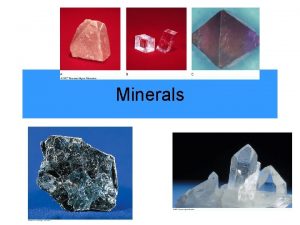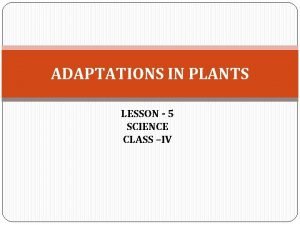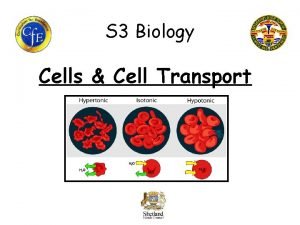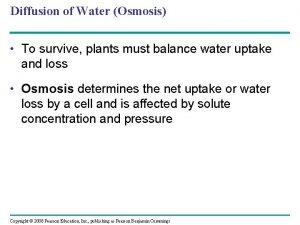Under pressure Why plants cant survive without osmosis






- Slides: 6

Under pressure! Why plants can’t survive without osmosis.

Growth and development (Cell expansion) Support (Turgor pressure) • • • Root growth Flower growth and development Pollen tube growth Fruit growth and development • • Maximising leaf surface area for photosynthesis and gas exchange Holding plant organs in optimum positions Allowing roots to push down into the soil as they grow Transport • • • Movement of water from soil to the Xylem vessels in the root via symplast Movement of water across the cells of the leaf from Xylem vessels to air spaces within spongy mesophyll layer. Mass flow of Water carrying solutes in the phloem Survival and response • • • Opening and closing stomata via change in shape of guard cells Rapid changes in position of leaves to alarm predators Changes in leaf shape as part of a trap mechanism

Growth and development (Cell expansion) • • Root growth Flower growth and development Pollen tube growth Fruit growth and development Birch pollen tubes Tap root of Dandelion Longitudinal section of root tip of Maize Wild strawberry

Support (Turgor pressure) • Maximising leaf surface area for photosynthesis and gas exchange • Holding plant organs in optimum positions for function • Allowing roots to push down into the soil as they grow Leaves of wood sorrel 3 D image of lateral root of Thale cress Bumble bee on pear blossom

Transport • Movement of water from soil to the Xylem vessels in the root • Movement of water across the cells of the leaf from Xylem vessels to air spaces within spongy mesophyll layer • Mass flow of water and solutes in the phloem Transverse section of part of a sunflower stem showing vascular bundle Transverse section through leaf midrib. Root hair cells

Survival and response • Opening and closing stomata via change in shape of guard cells. • Rapid changes in position of leaf to alarm predators • Changes in leaf shape as part of a trap mechanism Mimosa pudica Surface view of guard cells in a leaf of Thale cress (Arabidopsis) Venus fly trap











